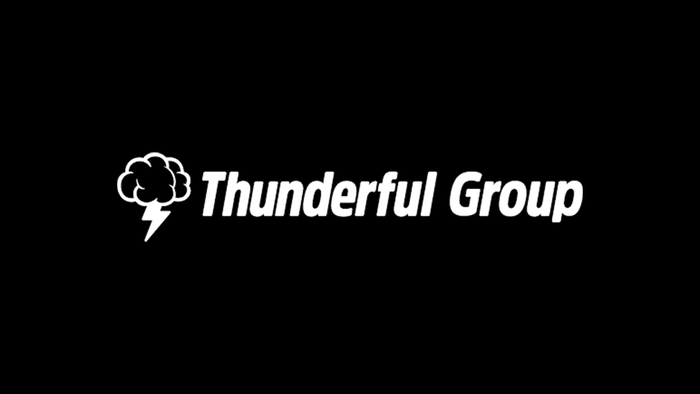How Microsoft and Sony are transitioning to day-one digital releases
While Xbox 360 and PlayStation 3 have seen many success stories in purely digital releases, consoles are still mainly vehicles for retail software. Here's how Sony and Microsoft are transitioning to digital day-one releases.

When the Xbox 360 launched in November 2005 and the PlayStation 3 a year later, it was assumed that their digital storefronts would play a critical role in how they sold software to consumers. And while there have been many success stories in purely digital games – like Castle Crashers, Trials HD, and Minecraft – consoles are still mainly vehicles for retail software. This dependence on retail has appeared to keep the biggest titles (Halo, Call of Duty, Assassin's Creed) from being available as day-one digital download titles -- games that are available on digital storefronts the same day they're available on retail shelves. As a concession to retailers who help move massive amounts of new software through pre-order drives and truckloads of lucrative accessories, on top of the original consoles themselves, publishers and platform holders have been willing to keep those games exclusive to retail for some period of time. But it won't always be that way, and Sony's PlayStation 3 long ago began the transition to a post-retail world. Since January 2011, with the launch of Mass Effect 2 from Electronic Arts, over 90 games have launched on the PlayStation Store on the same day they were released at retail. A wide range of publishers, like Electronic Arts, Activision, Blizzard, Capcom, Bethesda, Ubisoft, Take Two, Sega and Tecmo Koei, have all all published their biggest games as day-one digital titles.
Microsoft's digital release strategy
Microsoft, on the other hand, does not appear to be doing day-1 digital releases. Using Microsoft's list of Games on Demand, and comparing with the retail release dates of those titles, the closest I could find was Just Dance 2014, which was available for purchase on the Xbox Marketplace three days after it hit retail. (It was day-one digital on the PS3.) Even the biggest game of the year, Grand Theft Auto V, was available for purchase on the PlayStation Store the day it was released at retail, September 17, 2013. It was available on the Xbox 360 Games on Demand service a full month later, on October 18, 2013. While those delays (three days for Just Dance 2014, a full month for GTA V) are still delays, historically they are very short. To get an idea of just how far each console company has come with its digital releases, I put together the following two diagrams. On both diagrams, a point represents a game that was released at both retail and as a digital download. A game's horizontal coordinate is the original retail release date, and the vertical coordinate is its digital release date. The red line is the day-1 digital line: where retail and digital happen simultaneously. I've also marked a line for the 6-month delay (orange) and 1-year delay (yellow) releases. Here is the Xbox 360 diagram:  On August 6, 2009, Microsoft's Games on Demand service for Xbox 360 games launched with Need for Speed: Carbon, Oblivion, Bioshock, LEGO Star Wars: The Complete Saga, Viva Pinata, Mass Effect, and Call of Duty 2. Prior to that, the only titles on the service were for the original Xbox, but I've declined to consider those here and focus only on Xbox 360 games. Those games represent the horizontal line of dots just below the November 2009 line on the diagram. From that point until late 2010 and early 2011, practically every game on the service was at least a year beyond its retail release date. At the beginning of 2011, many games began moving onto the service that were only six months past their retail release dates. Then in mid-2012 the minimum delay moved to approximately three months. In the past couple of months, that delay has gotten shorter and shorter, up to the three day delay that Just Dance 2014 had just a couple of week ago.
On August 6, 2009, Microsoft's Games on Demand service for Xbox 360 games launched with Need for Speed: Carbon, Oblivion, Bioshock, LEGO Star Wars: The Complete Saga, Viva Pinata, Mass Effect, and Call of Duty 2. Prior to that, the only titles on the service were for the original Xbox, but I've declined to consider those here and focus only on Xbox 360 games. Those games represent the horizontal line of dots just below the November 2009 line on the diagram. From that point until late 2010 and early 2011, practically every game on the service was at least a year beyond its retail release date. At the beginning of 2011, many games began moving onto the service that were only six months past their retail release dates. Then in mid-2012 the minimum delay moved to approximately three months. In the past couple of months, that delay has gotten shorter and shorter, up to the three day delay that Just Dance 2014 had just a couple of week ago.
Sony dabbles in day-one digital
Using exactly the same approach, the diagram for the PlayStation 3 looks like this. (Click for a larger version.)  The difference is quite striking. As early as August 2007, the PlayStation 3 had its first day-one digital release. That was Sony's own Warhawk, the multiplayer remake of the PS1-era combat game. Almost exactly a year later, Microsoft would launch its Games on Demand service for Xbox 360 games, but the newest titles released were about two years old. The next big day-one digital release on the PS3 would be NFL Head Coach 09, from EA Sports. Technically, this was released with a one-day delay, but at that time Sony's PlayStation Store updates were later in the week. (Regular followers of PlayStation Store releases know that actual update times used to be extremely random, varying by many hours from week to week.) After NFL Head Coach 09, almost no new full retail games were released on the PlayStation Store until mid-2010. During the latter half of 2010, a few major day-one digital titles were released, but not regularly. Then in early 2011, the day-1 digital releases began in earnest, kicking off with Mass Effect 2 from Electronic Arts on 18 January 2011. Throughout 2011 and 2012, those releases increased in frequency. In 2013 there has been a day-one digital release on the PlayStation Store practically every week, over sixty in the past twelve months alone. Looking back to the beginning of this generation, consider how far ahead Microsoft seemed in its online console technology. It had years of Xbox Live service already under its belt (it launched in November 2002) and was already selling software digitally on the Xbox well before the Xbox 360 launched. Microsoft was the first to offer digital services like Netflix on consoles, and still has what is arguably the better platform for multiplayer games. And Sony – well, let me remind you that the PS3 launched with a PlayStation Store that amounted to a pile of HTML pages guarded by a browser user agent sniffer to try to keep out interlopers. Sony has come a tremendous way in seven years (though still no cross-game chat), and on the subject of digital software releases have far surpassed the competition.
The difference is quite striking. As early as August 2007, the PlayStation 3 had its first day-one digital release. That was Sony's own Warhawk, the multiplayer remake of the PS1-era combat game. Almost exactly a year later, Microsoft would launch its Games on Demand service for Xbox 360 games, but the newest titles released were about two years old. The next big day-one digital release on the PS3 would be NFL Head Coach 09, from EA Sports. Technically, this was released with a one-day delay, but at that time Sony's PlayStation Store updates were later in the week. (Regular followers of PlayStation Store releases know that actual update times used to be extremely random, varying by many hours from week to week.) After NFL Head Coach 09, almost no new full retail games were released on the PlayStation Store until mid-2010. During the latter half of 2010, a few major day-one digital titles were released, but not regularly. Then in early 2011, the day-1 digital releases began in earnest, kicking off with Mass Effect 2 from Electronic Arts on 18 January 2011. Throughout 2011 and 2012, those releases increased in frequency. In 2013 there has been a day-one digital release on the PlayStation Store practically every week, over sixty in the past twelve months alone. Looking back to the beginning of this generation, consider how far ahead Microsoft seemed in its online console technology. It had years of Xbox Live service already under its belt (it launched in November 2002) and was already selling software digitally on the Xbox well before the Xbox 360 launched. Microsoft was the first to offer digital services like Netflix on consoles, and still has what is arguably the better platform for multiplayer games. And Sony – well, let me remind you that the PS3 launched with a PlayStation Store that amounted to a pile of HTML pages guarded by a browser user agent sniffer to try to keep out interlopers. Sony has come a tremendous way in seven years (though still no cross-game chat), and on the subject of digital software releases have far surpassed the competition.
The road to day-one digital
Microsoft is finally closing in on day-one digital releases just as the Xbox One and PlayStation 4, the first completely native digital consoles, are launching. Microsoft has taken years to ease into it, and it would be interesting to know how they developed the strategy that has guided them for the past eight years. Sony appears to have simply taken the plunge early, with some cooperation from Electronic Arts on games like NFL Head Coach 09, Burnout Paradise and Mass Effect 2. Perhaps, being the underdog, it had little to lose by pushing precisely where the competition was weak. In retrospect, I suspect Microsoft will see in these past few years a missed opportunity. Soon it will all be behind us. For years there has been a sense of dread and anticipation for the day when retail and digital are given equal weight in the market. In just over a month's time, that will no longer be some ideal in a distant future – it will simply be reality. The graphs above tell a bit of the history that got us here.
About the Author(s)
You May Also Like








